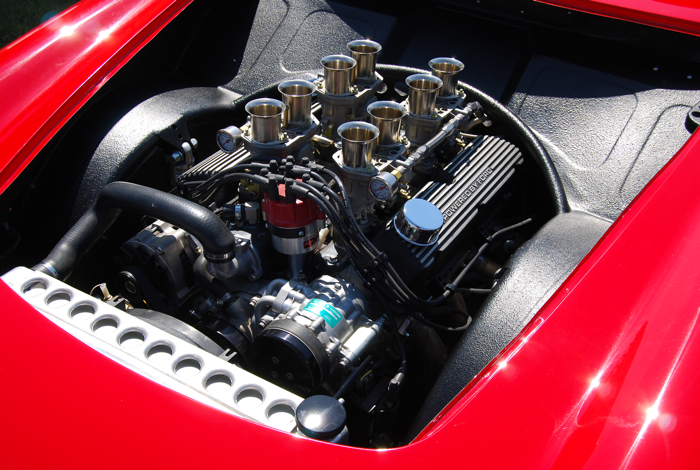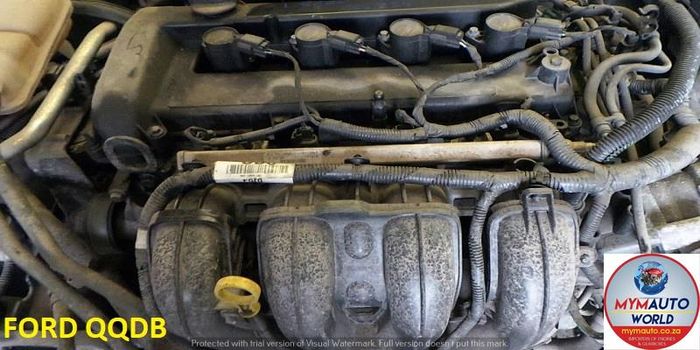Comprehensive Evaluation of a Subcompact Vehicle's Powertrain Capabilities
In the realm of auto design, the powertrain of a subcompact vehicle stands as an essential nexus where performance, performance, and technology assemble. When inspecting the intricate web of elements that thrust these vehicles onward, one discovers a symphony of design wonders waiting to be studied. From the engine's relentless pursuit of optimal performance to the transmission's seamless choreography of power circulation, every component plays a critical role in defining the total driving experience. Beyond the surface area exists a chest of insights waiting to be uncovered, promising a deeper understanding of how these powertrains truly fare in the world of useful application.
Engine Performance Analysis
In evaluating the engine performance of the subcompact car, a thorough analysis discloses its effectiveness and power outcome under different driving problems. The subcompact auto's engine, a crucial element of its powertrain system, demonstrates good performance metrics.
Additionally, when based on strenuous screening circumstances such as high-speed velocity or uphill climbs up, the engine shows strength and responsiveness. Its power output stays constant, supplying sufficient acceleration when required. The subcompact cars and truck's engine is tailored to meet the demands of urban driving, where quick velocity and active ability to move are crucial.
In addition, the engine's design includes modern-day innovations that improve its performance characteristics. Functions like turbocharging or variable shutoff timing contribute to boosted power distribution and torque, boosting the general driving experience. Finally, the engine efficiency of the subcompact cars and truck highlights its capacity to provide reputable and reliable power result across numerous driving problems.
Transmission Performance Evaluation
Evaluating the subcompact vehicle's transmission effectiveness entails evaluating its performance in sending power effortlessly throughout different driving problems. The performance of a transmission system is critical as it directly impacts the overall performance and gas economic situation of the car.
One common technique used to assess transmission effectiveness is through dynamometer testing, where the power result from the engine is gauged at the input and result shafts of the transmission. Inconsistencies in between input and outcome power can indicate the degree of effectiveness of the transmission system. Furthermore, real-world driving tests are performed to assess how the transmission executes in sensible situations. By examining these elements, designers can recognize locations for enhancement and maximize the transmission system for far better overall performance and effectiveness.
Gas Performance Evaluation
The assessment of the subcompact cars and truck's gas performance entails an extensive evaluation of its intake prices under different driving problems. Gas efficiency is a crucial factor in evaluating the total efficiency and cost-effectiveness of a vehicle. By gauging the quantity of gas eaten each distance traveled, commonly shared as miles per gallon (MPG) or liters per 100 kilometers (L/100 km), the performance of the subcompact automobile's powertrain can be figured out.

In addition, advancements in technology, such as hybrid systems, regenerative braking, and automated start-stop systems, have significantly improved fuel efficiency in modern subcompact cars and trucks. Manufacturers proceed to enhance and innovate powertrain parts to enhance gas efficiency while satisfying performance demands and ecological regulations. Reviewing a subcompact vehicle's fuel efficiency gives beneficial understandings for customers looking for lasting and affordable transport services.
Velocity and Handling Assessment
An integral facet of evaluating the performance capabilities of a subcompact automobile lies in examining its velocity and taking care of features. Acceleration is vital as it establishes just how promptly the lorry can reach wanted speeds, influencing overall driving experience and maneuverability in various web traffic problems. opel corsa engine. Subcompact automobiles are often favored for their nimbleness and dexterity, making acceleration from dead stop and during overtaking maneuvers crucial variables to consider
When it pertains to managing, a subcompact vehicle's ability to navigate corners, preserve stability at high speeds, and her explanation provide a responsive guiding feeling are critical. Limited city streets and winding roads call for specific taking care of to guarantee vehicle driver self-confidence and security. Aspects such as suspension adjusting, weight circulation, and tire grip play considerable functions in determining a subcompact automobile's overall handling expertise.

Powertrain Parts Review
Upon diving right into the complexities of a subcompact auto's performance, a detailed evaluation of its powertrain elements is essential to understand the automobile's mechanical foundations. The powertrain of a subcompact cars and truck typically contains the engine, transmission, driveshaft, differential, and axles. The engine, typically a smaller variation four-cylinder in a subcompact automobile, is helpful hints in charge of producing power by shedding fuel and transforming the power into mechanical pressure. The transmission, whether guidebook or automated, transfers this power to the wheels through the driveshaft. The differential enables the wheels to turn at different speeds when transforming, boosting ability to move. Moreover, the axles transmit power from the differential to the wheels, enabling movement. Understanding just how these components collaborate is important in evaluating a subcompact vehicle's total performance, effectiveness, and driving characteristics. In the following section, we will dig much deeper right into the specific roles and interactions of each powertrain component to give a comprehensive review of a subcompact vehicle's powertrain capacities.
Final Thought
Finally, the subcompact cars and truck's powertrain capacities have been thoroughly analyzed in regards to engine performance, transmission performance, fuel handling, velocity, and performance. The comprehensive evaluation highlights the value of each part interacting perfectly to provide optimum efficiency. Generally, the powertrain parts of the subcompact auto have actually been found to be efficient and healthy, making it a dependable selection for motorists looking for a small and fuel-efficient automobile.
In the realm of automobile engineering, the powertrain of a subcompact auto stands as an essential nexus where performance, efficiency, and development converge.In analyzing the engine efficiency of the subcompact automobile, a thorough evaluation discloses its effectiveness and power result under various driving problems.Analyzing the subcompact auto's transmission efficiency entails analyzing its efficiency in sending power flawlessly throughout numerous driving problems. Understanding exactly how these elements work with each other is essential in examining a subcompact automobile's overall performance, effectiveness, and driving characteristics.In conclusion, the subcompact vehicle's powertrain click capabilities have actually been thoroughly examined in terms of engine performance, transmission performance, gas handling, velocity, and effectiveness.